
5.3 Forces
Image: Kandinsky, Several Circles, 1926
What are forces?
When objects interact, they do so by exerting forces on each other.
Forces are not ‘contained’ in an object, so we do not say that an object ‘has’ a force. A force is an interaction, and it is exerted by one object on another object.
Loosely speaking, a force is a push or pull on an object
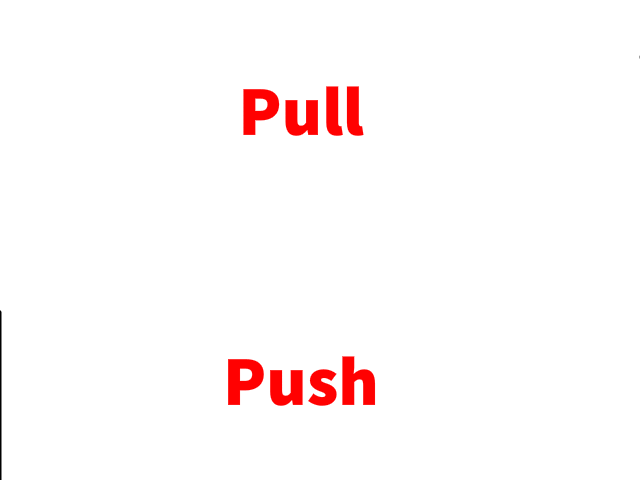
What can forces do?
Forces can change the velocity of an object (they can change the object’s speed or the direction in which it is moving).
In a nutshell: forces can accelerate objects.
(Remember, a force can change an object’s direction without changing its speed. If an object has changed direction its velocity has changed. If an object’s velocity has changed it has accelerated.)

Forces can also cause a distortion in the size or shape of an object, but we won’t study this effect in this course.
How do we describe forces?
Forces are vector quantities (they have magnitude and direction)
There are contact forces and non-contact (field forces) (Although at the atomic level, all forces operate through fields).
Forces are always given the symbol F in formulae. We usually use subscripts to identify the type of force. E.g. Fg is the force of gravity.
The units of force are Newtons (abbreviated N)
- One Newton is the force required to accelerate a mass of 1 kg by 1 m s-2
- So 1 Newton = 1 kg m s-2 (these are the base units in the SI System).
How to distinguish between symbols and units?
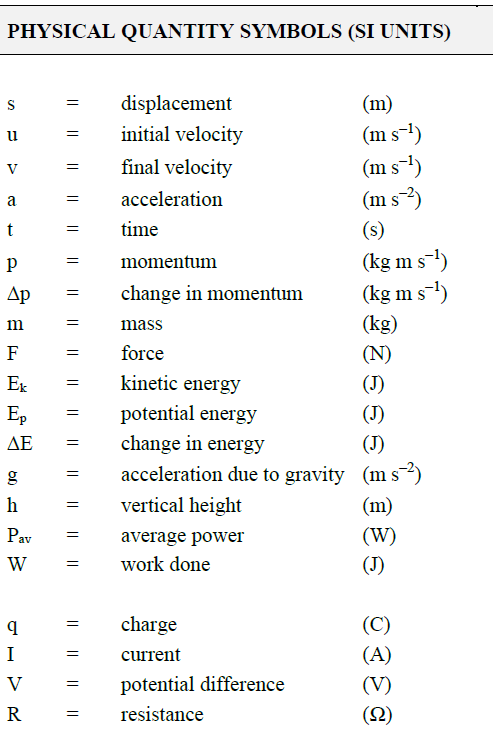
In these notes, italics will be used for symbols. Thus, F is the symbol for force.
Units are never italicised. Thus, if the force is 45 Newtons, I will type F = 45 N
In your GYC Physical Sciences booklet and your External Exam Information Sheet, however, regular font is used.
What is the SI System?
Scientists today use the International System of Units (SI Units). It is simply the modern form of the metric system. There are seven base units in the modern metric system (units of time, length, mass etc.).
Each unit has an abbreviation, which is never italicised. Thus, if the force is 45 Newtons, I will type F = 45 N
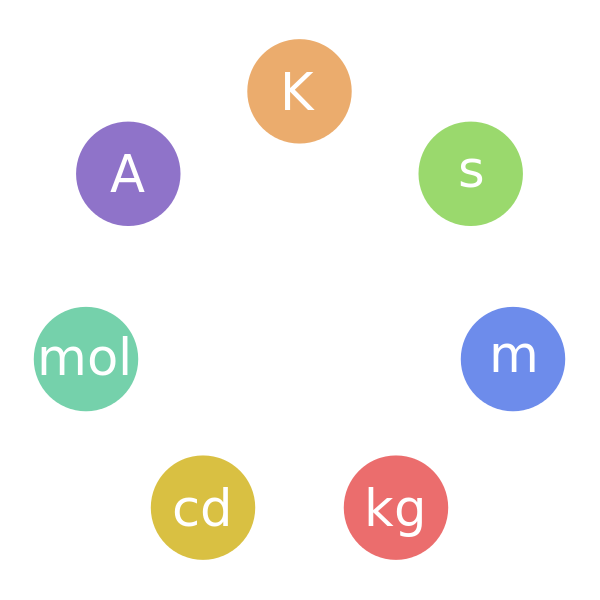
Not all units used in Physical Sciences are base units. For example the unit of Force is the Newton. Such units are called derived units. Expressed in base units, one Newton equals one kg m s−2. You’ll see why soon!
Gravity
What is gravity?
Gravity is the force of attraction between any two objects with mass.
What is the mass of an object?
Mass is a measure of the amount of matter inside an object. Crudely speaking, the more protons, neutrons and electrons in all the atoms in an object, the bigger its mass.
The SI unit for mass is the kilogram (kg). Mass is usually given the symbol m. Is it a vector or scalar quantity?
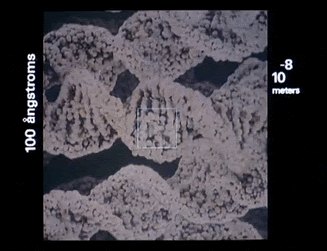
What is weight?
Weight is simply the name we give to the force of gravity acting on an object. We use it to describe the force acting on objects that are relatively close to the Earth (or another planet). For more distant and massive objects, we refer to the gravitational force. The moon experiences a gravitational force, but we wouldn’t talk about the weight of the moon.
In short, Weight is the force that gravity exerts on a body. Because it’s a force, its SI unit is Newtons. Like all forces, weight also has a direction (“down” if you’re on the surface of the Earth).
What does weight depend on?
Experimentally, we find that Weight is directly proportional to mass and the acceleration due to gravity, g.
The magnitude of weight is:
- W or Fg is weight in Newtons (N). Your information sheet uses Fg*
- m is mass (kg)
- g is acceleration due to gravity (9.81 ms-2)
It is also called the strength of the gravitational field (N kg-1). More on this on the next slide…
*This helps to avoid confusion with another quantity with the symbol W – Work.
What is the Gravitational field strength? (additional info)
We can describe the strength of Earth’s gravitational field in terms of how much force is experienced by a certain amount of mass.
The gravitational field strength, g, is defined as the force of gravity on a unit of mass:
- Its units are N kg-1
If we replace Newtons with the base units for force, kg m s-2, then we can see that its units can also be defined as m s-2 !
So the strength of the gravitational field can also be defined as the acceleration an object experiences in free-fall under the influence of gravity alone (g = 9.8 m s–2 at the Earth’s surface).
How much force is needed to lift an object?
To lift an object, we need to apply a force greater than the weight force.
What force is required to lift the ascent stage of the the lunar module off the lunar surface?
mmodule = 2150 kg
gmoon = 1.6 N/kg
image By Apollo 16 astronauts – NASA photo AS16-116-18580, cropped, Public Domain, https://commons.wikimedia.org/w/index.php?curid=6057549
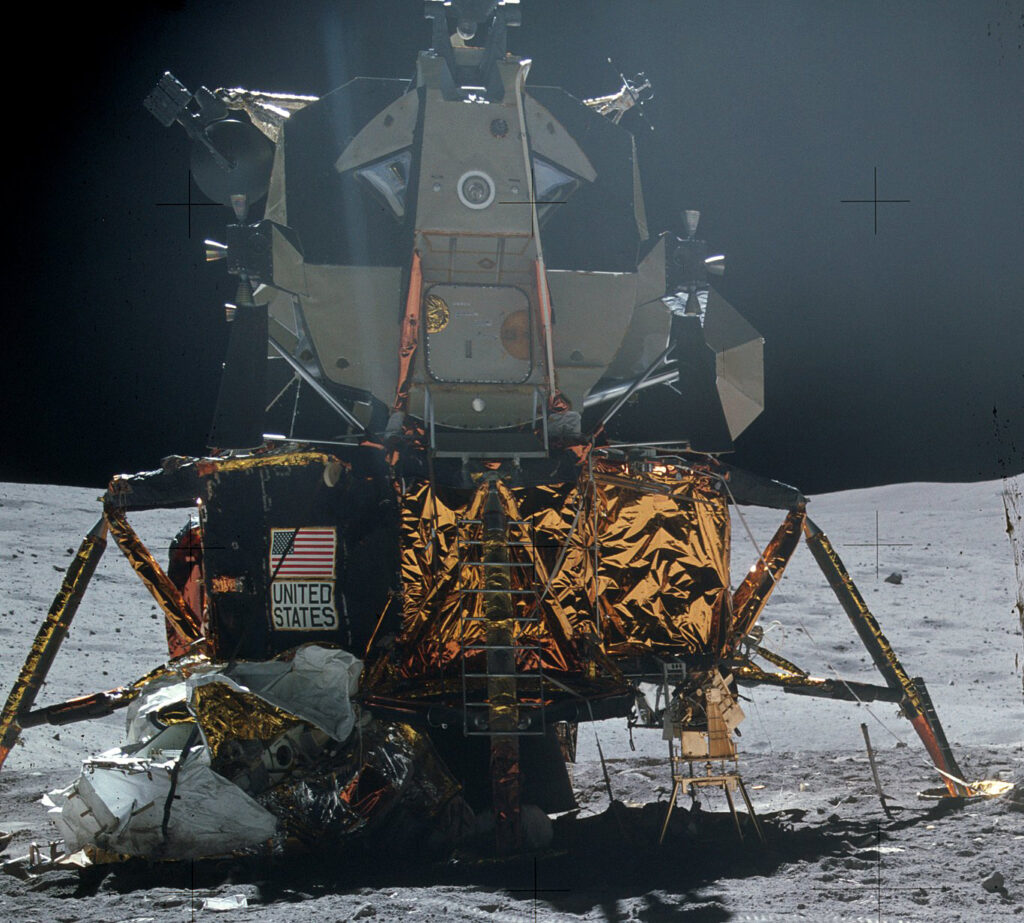
What is the normal reaction force?
If a body touches another body, there is a force of reaction or contact force between the two bodies.
This force is perpendicular to the surface of the body exerting the force. (It is described as a normal force because it acts at right angles to the surface.)
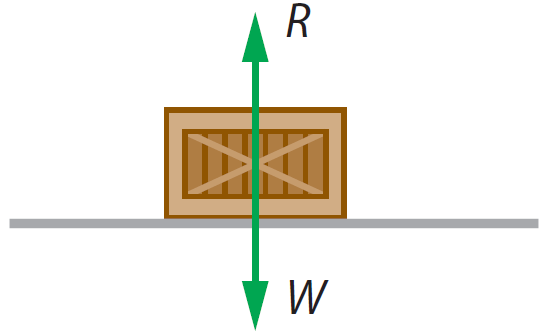
It is described as a reaction force because it is only acting in response to the force that the body is applying to the surface of the other body.
The normal reaction force is usually given the symbol N or R.
Friction
What are frictional forces?
Frictional forces generally oppose the motion of a body.
The friction force is the component of the contact force that prevents one surface from sliding over another surface.
It always acts parallel to a surface.
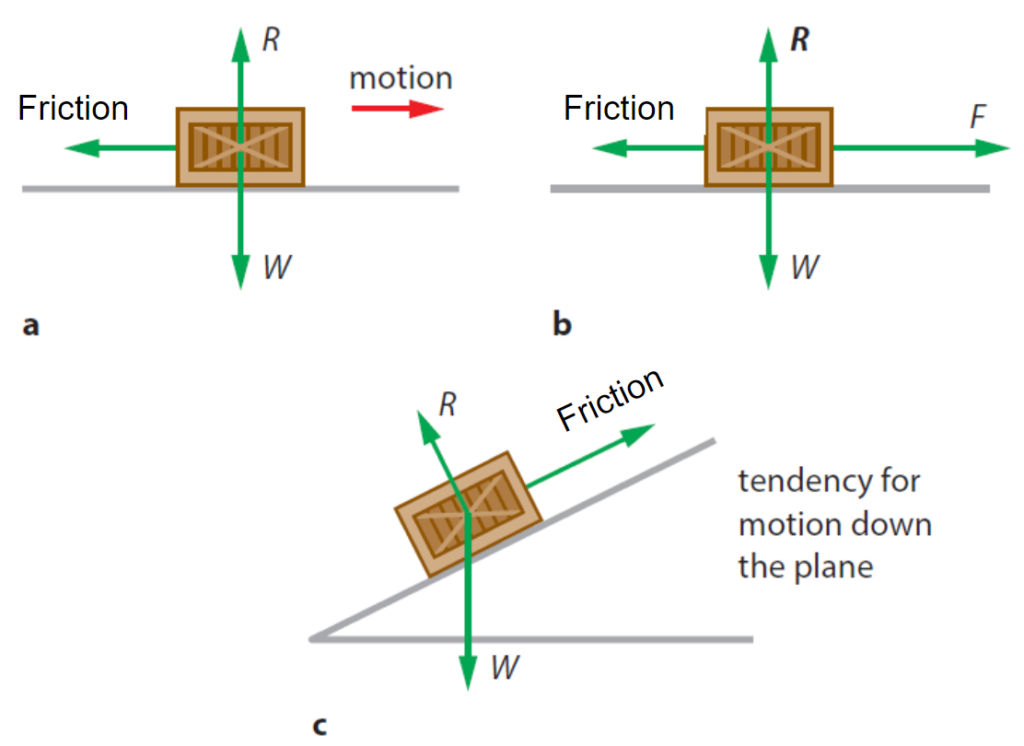
What is the direction of the friction force?
The friction force acting on an object may be in the direction of motion of the object, or it may be in the opposite direction.
Friction, acting in the direction opposite to motion, causes sliding to be reduced; for example, slowing down the sliding book.
Friction, acting in the direction of motion, allows you to walk.
In all cases, friction always opposes the relative motion of one surface against another.
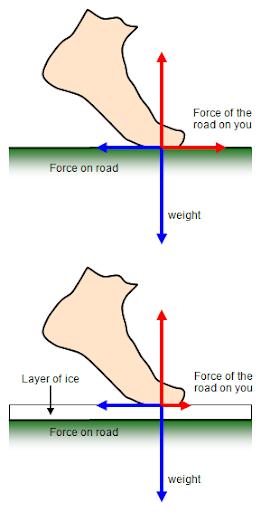
Free body diagrams
What is a free body diagram?
Free-body diagrams are used to show the relative magnitude and direction of all forces acting upon an object in a given situation.
We treat the body as a point particle, so that all forces act through the same point. We usually draw the forces as if they originate at the object. This makes solving problems easier.
The length of the arrow representing a given force is proportional to the magnitude of the force.
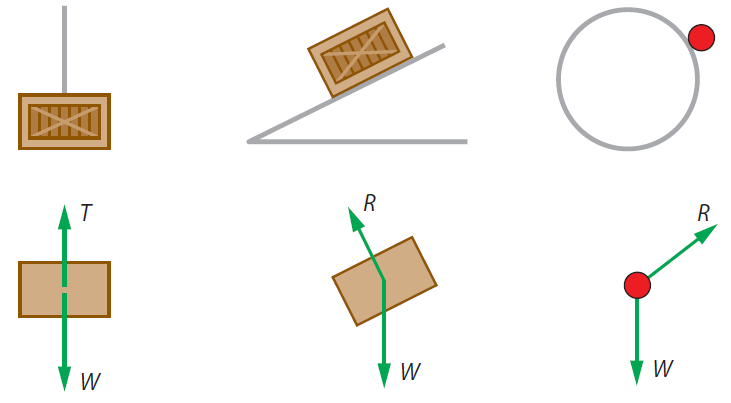
Newton’s First Law of Motion
What is inertia?
Inertia is the tendency for an object to remain in uniform motion or at rest. Inertia is an object’s resistance to changes to its velocity. All objects with mass have inertia.
Inertia is dramatically illustrated in a car crash. Imagine that you don’t wear a seatbelt and that your car collides head-on with a tree. Without a seatbelt, there is negligible force to change your motion (slow you down).
So when the collision stops the car, you continue to move forwards at your original high velocity, as per Newton’s First Law until the steering wheel or windscreen stops you with a bonecrushing force. Sometimes people say (wrongly) that they were forced or thrown forwards by the crash. This is a fictitious force – inertia is responsible.
What is Newton’s First Law?
Newton’s first law states that:
- An object at rest will remain at rest
and - an object in motion will continue with the same velocity (it will continue to to travel in a straight line and at the same speed)
- unless acted upon by an unbalanced force.
We can simplify this to “When the net force on a body is zero, the body will move with constant velocity (which may be zero)” (Tsokos)

Why don’t we observe Newton’s first law on Earth?

Newton’s first law defines what a force is. A force is what changes a body’s velocity. A force is not what is required to keep something moving, as Aristotle thought.
Aristotle taught that the natural state of Earthly objects, like Year 11 Physics students, is to be stationary, so you need to keep applying an external influence (force) to keep them moving. This seems right—if you kick a ball, it eventually stops, so you need to kick it again to keep it moving; however, this is wrong.
Aristotle’s old idea appears true because almost everywhere you look, there are external forces, such as friction or gravity, that slow things down (change their velocity). But in situations where friction and other external forces are almost eliminated, such as in the vacuum of space or with special laboratory equipment, you can show that Newton was right.
Newton’s Second Law of Motion
How do forces affect motion (the study of Dynamics)?
Newton’s second law tells us what happens when one or more forces act on an object. It quantifies the relationship between force and acceleration that was introduced in the first law.
At any given moment there are usually many different forces acting on an object.
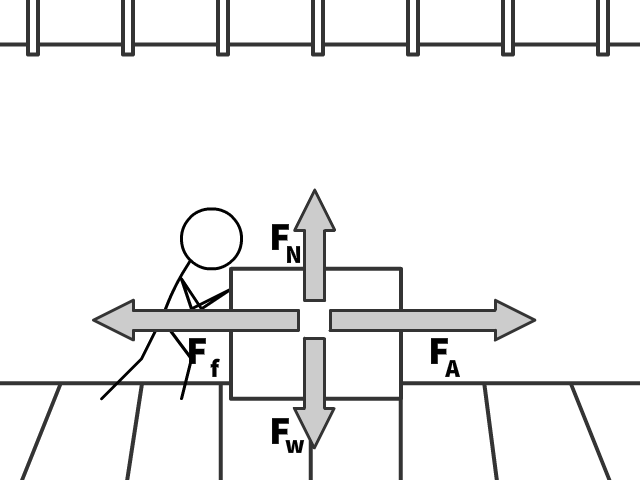
What are the forces acting on the box? Is the box accelerating? Explain.
What is Newton’s Second Law?
Newton’s second law tells us what happens when one or more forces act on an object. It quantifies the relationship between force and acceleration that was introduced in the first law.
Newton’s second law states that: The net force on a body of constant mass is proportional to that body’s acceleration and is in the same direction as the acceleration.
Mathematically this can be stated as:
Because all physicists understand that the force in this equation is the net force, it’s usually written simply as F = ma
The equation F = ma defines the unit of force, the newton (N). One newton is the force required to accelerate a mass of 1 kg by 1 m s−2 in the direction of the force.
What does Newton’s second law say about acceleration?
To repeat: Newton’s second law tells us what happens when one or more forces act on an object.
It can make more sense to think of Newton’s second law in terms of acceleration.
The acceleration of an object is directly proportional to the net force acting on it and inversely proportional to the mass of the object.
If an object is accelerating, it must be experiencing a net force.
Finding the net force
What is the net force?
To understand Newton’s second law, we need to be able to work out the net force (the ‘unbalanced’ force) acting on an object.
The net force that acts on an object is the vector sum of all the forces that are acting on that object.

What is motion in one dimension?

In this course, we will only deal with forces acting in one dimensions.
When forces act in one dimension, they can act in the same direction or in opposite directions
How to add vectors in one dimension?
We can assign positive or negative numbers to vectors to indicate direction.
We get to choose which direction we represent with positive numbers, and which we represent with negative numbers (we call this the sign convention).
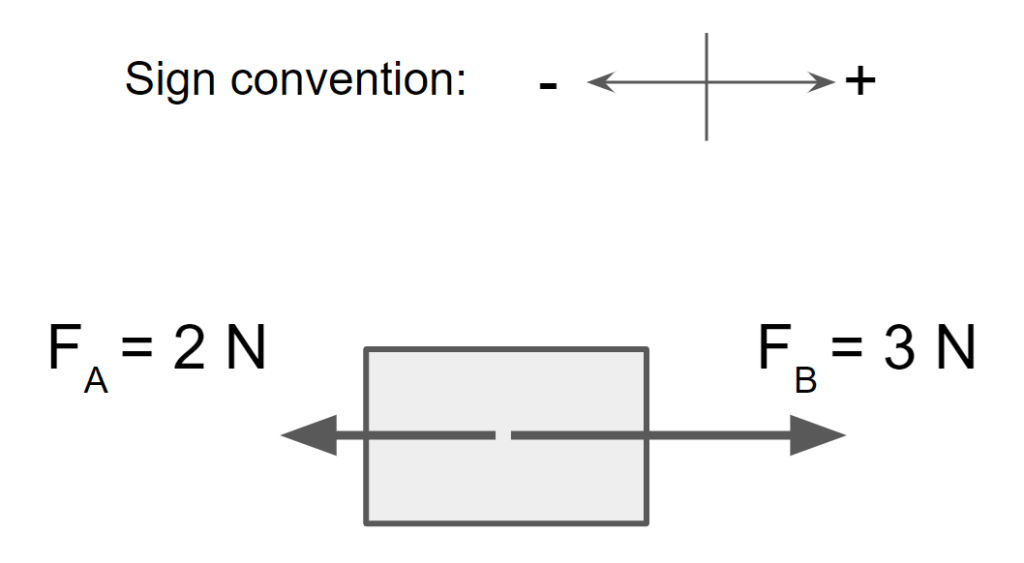
For example, when we add forces FA and FB, we can use positive values for all vectors to the right.
Thus, FA + FB = -2 + 3 = +1 N.
The answer is positive, which tells us that when the add the two forces together, the resultant force is to the right
Falling objects and terminal velocity
Do you hold misconceptions about falling objects?
There are many misconceptions around falling objects.
The question asked in the video isn’t entirely fair. On Earth, objects with more mass generally hit the ground before objects with less mass because of air resistance. In the video this isn’t obvious because the objects are large and they don’t fall far.
What is the acceleration of a falling object?
In the absence of air resistance, what is the acceleration of a falling object?
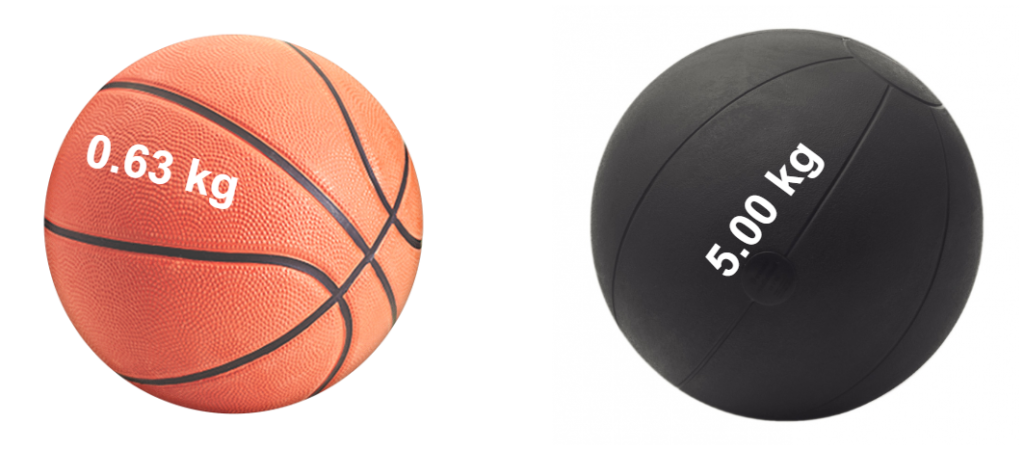
How do we calculate the force acting on each ball?
How do we calculate the acceleration of each ball? (Can you recall Newton’s second law equation).
What is terminal velocity?
Terminal velocity happens when a object’s weight equals the air resistance force.
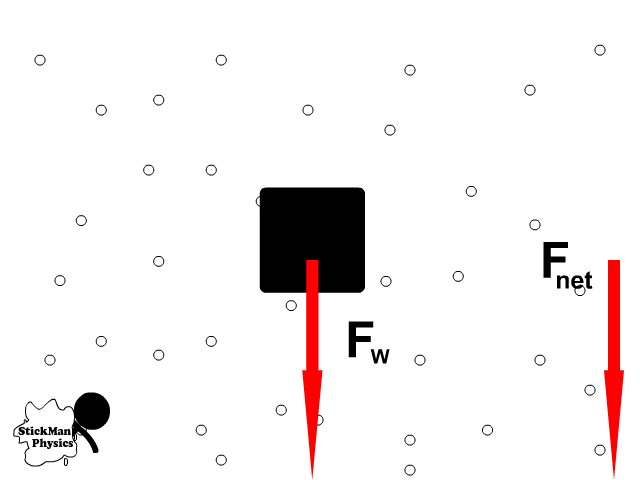
There no net force at terminal velocity.
Thus, the acceleration of an object when it reaches terminal velocity is zero.
How to define terminal velocity?
It is better to understand why terminal velocity happens rather than memorising a definition. Having said that:
When the weight force of a falling object (or the driving force of a moving object, in general) is balanced by the frictional force of the air (or the fluid, in general), Fnet = 0 N , a = 0 m s-2, the object’s speed is constant, and we say that the object is travelling at terminal velocity.
Terminal velocity can also apply to objects moving in other directions and through other media (not just air). So, In general terms:
When the the driving force of a moving object is balanced by the frictional force of the fluid it is moving through, Fnet = 0 N , a = 0 m s-2, the object’s speed is constant, and we say that the object is travelling at terminal velocity.
Newton’s Third Law of Motion
What is Newton’s Third Law of Motion?
Newton’s third law states that if body A exerts a force on body B, then body B will exert an equal and opposite force on body A.
These forces are known as force pairs.
These equal and opposite forces act on different bodies.
An Excellent summary video available on ClickView is Shedding Light on Motion Episode 8: Newton’s Third Law.
Why is Newton’s Third Law of motion important?
No forward motion could occur without an action–reaction pair of forces. E.g.
- When you swim, you push the water backwards with your hands, arms and legs. The water pushes in the opposite direction, propelling you forwards.
- In order to walk or run, you push your feet backwards and down on the ground. The ground pushes in the opposite direction, pushing forwards and up on your feet.
How to get action-reaction pairs right…
To always get action-reaction pairs correct, use the following formula
- A exerts a force on B
- B exerts an equal and opposite force on A
Action-reaction pairs must ALWAYS act on different objects.
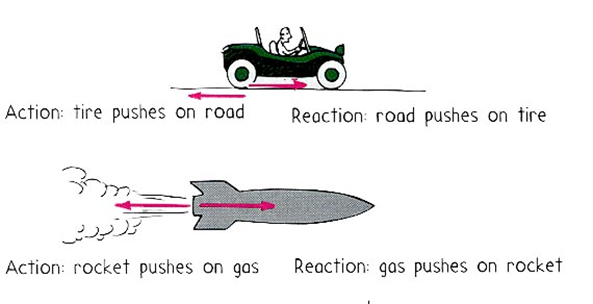
Equilibrium
Forces and Newton’s First Law
Remember: Newton’s first law applies when the net force or resultant force acting on an object equals zero.
What is equilibrium?
Once we have found the net force acting on an object, we can calculate its acceleration using Newton’s second law. When all the forces acting add to zero, the acceleration is zero. This is called equilibrium.
When an object is at rest or moving with constant velocity, it has no acceleration. If the acceleration of an object is zero, then the net force acting on the object must also be zero and we say the object is in equilibrium. Note that an object in equilibrium is not necessarily stationary.
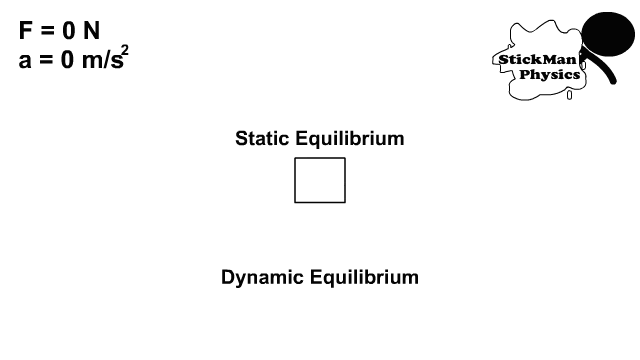
The normal force and equilibrium
What’s the difference between equilibrium and action-reaction pairs?
The forces in an action-reaction pair are equal and in opposite directions but act on different objects.
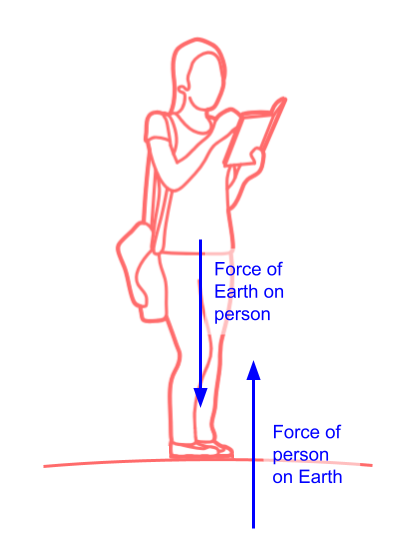
Applying the rule:
- Earth exerts a weight force on person
- The person exerts an equal and opposite force on the Earth
This is an action-reaction pair as each force acts on a diffent object.
Balanced forces can also act on an obect which is in equilibrium, but the forces act on the same object.
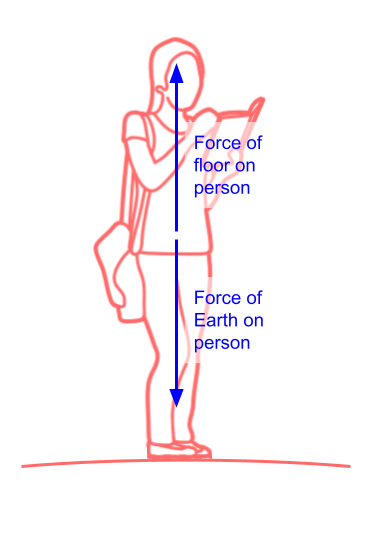
Applying the rule:
- Earth exerts a weight force on person
- Normal reaction force from the ground exerts an equal and opposite force on person
This is not an action-reaction pair as both forces are acting on the same object.